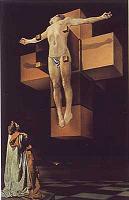Flashback to April 12, 2011 —
|
In the landscape of minimalism, John McCracken cuts a unique figure. He is often grouped with the “light and space” artists who formed the West Coast branch of the movement. Indeed, he shares interests in vivid color, new materials, and polished surfaces with fellow Californians enamored of the Kustom Kar culture. On the other hand, his signature works, the “planks” that he invented in 1966 and still makes today, have the tough simplicity and aggressive presence of New York minimalism…. “They kind of screw up a space because they lean,” McCracken has said of the planks. Their tilting, reflective surfaces activate the room, leaving the viewer uncertain of traditional boundaries. He notes that the planks bridge sculpture (identified with the floor) and painting (identified with the wall)…. His ultimate goal, as with all mystics, is unity— not just of painting and sculpture, but of substance and illusion, of matter and spirit, of art and life. Such ideas recall the utopian aspirations of early modernists like Piet Mondrian and Wassily Kandinsky. Related Art —
Unity
—Roman numeral I For a related figure, see a film review by A. O. Scott at The New York Times (September 21, 2010)— “You Will Meet a Tall Dark Stranger” begins with an unseen narrator— , sounding a lot like — paraphrasing . You may remember the quotation from high school English, about how life is a tale told by an idiot, full of sound and fury, signifying nothing. The observation is attributed to the playwright himself (“Shakespeare once said”), rather than to Macbeth, whose grim experience led him to such nihilism, but never mind. In context, it amounts to a perfectly superfluous statement of the obvious. If life signifies nothing, perhaps the tall dark figure above signifies something . Discuss. |
Related (if only phonetically) drama . . . Detective Cruz at Planck's Café.













